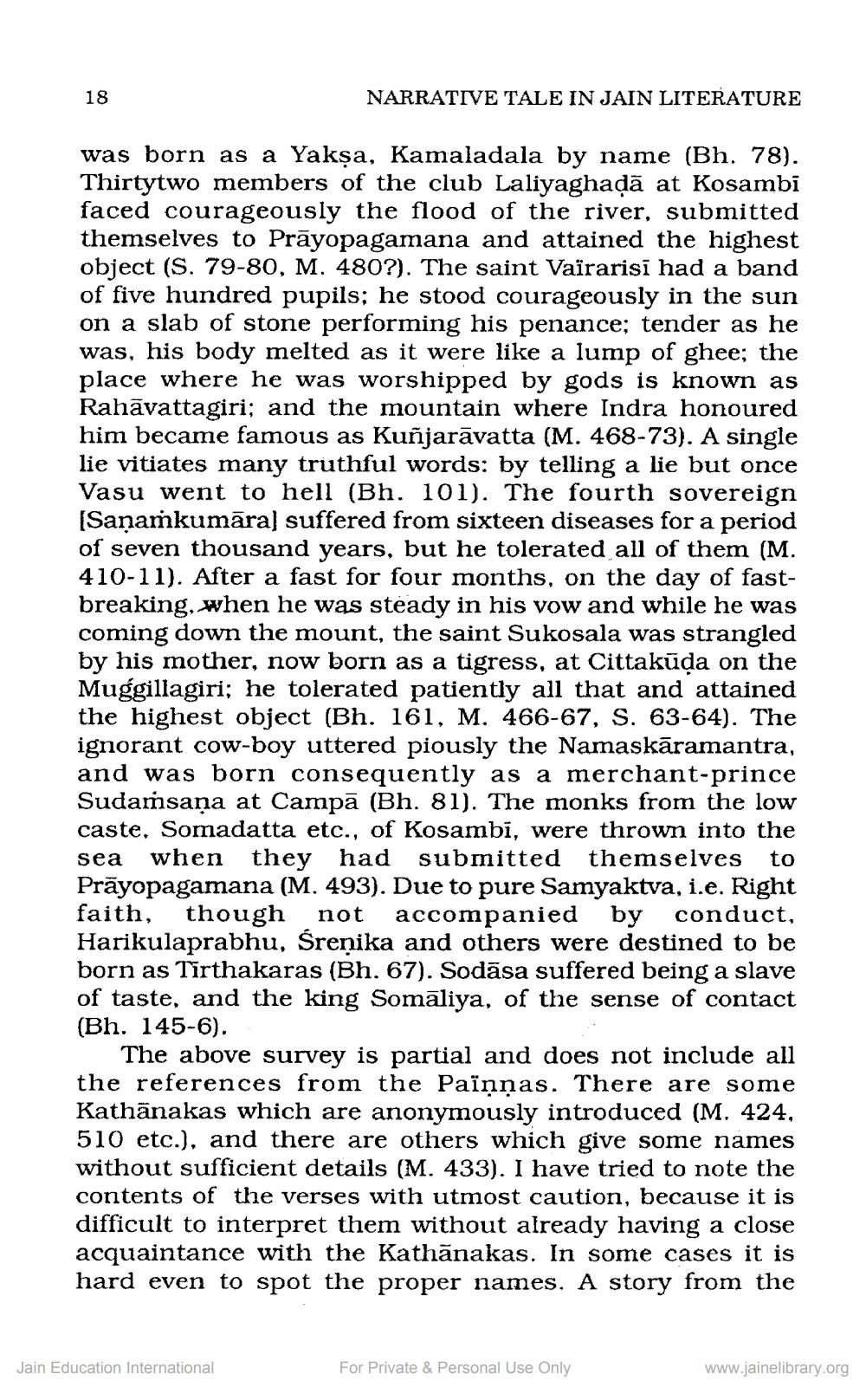________________
18
NARRATIVE TALE IN JAIN LITERATURE
was born as a Yakşa, Kamaladala by name (Bh. 78). Thirtytwo members of the club Lalivaghadā at Kosambi faced courageously the flood of the river, submitted themselves to Prāyopagamana and attained the highest object (S. 79-80, M. 480?). The saint Vaïrarisī had a band of five hundred pupils; he stood courageously in the sun on a slab of stone performing his penance; tender as he was, his body melted as it were like a lump of ghee; the place where he was worshipped by gods is known as Rahāvattagiri; and the mountain where Indra honoured him became famous as Kuñjarāvatta (M. 468-73). A single lie vitiates many truthful words: by telling a lie but once Vasu went to hell (Bh. 101). The fourth sovereign (Sanamkumāra) suffered from sixteen diseases for a period of seven thousand years, but he tolerated all of them (M. 410-11). After a fast for four months, on the day of fastbreaking, when he was steady in his vow and while he was coming down the mount, the saint Sukosala was strangled by his mother, now born as a tigress, at Cittaküda on the Muggillagiri; he tolerated patiently all that and attained the highest object (Bh. 161, M. 466-67, S. 63-64). The ignorant cow-boy uttered piously the Namaskāramantra, and was born consequently as a merchant-prince Sudamsaņa at Campā (Bh. 81). The monks from the low caste, Somadatta etc., of Kosambī, were thrown into the sea when they had submitted themselves to Prāyopagamana (M. 493). Due to pure Samyaktva, i.e. Right faith, though not accompanied by conduct, Harikulaprabhu, Śrenika and others were destined to be born as Tīrthakaras (Bh. 67). Sodāsa suffered being a slave of taste, and the king Somāliya, of the sense of contact (Bh. 145-6).
The above survey is partial and does not include all the references from the Païņņas. There are some Kathānakas which are anonymously introduced (M. 424, 510 etc.), and there are others which give some names without sufficient details (M. 433). I have tried to note the contents of the verses with utmost caution, because it is difficult to interpret them without already having a close acquaintance with the Kathānakas. In some cases it is hard even to spot the proper names. A story from the
Jain Education International
For Private & Personal Use Only
www.jainelibrary.org




